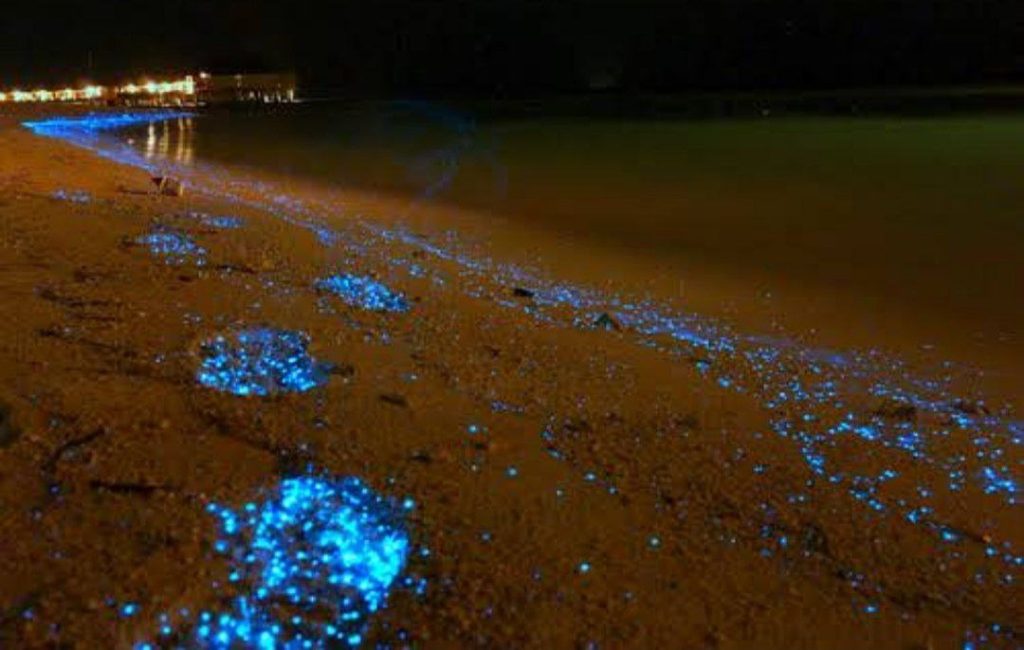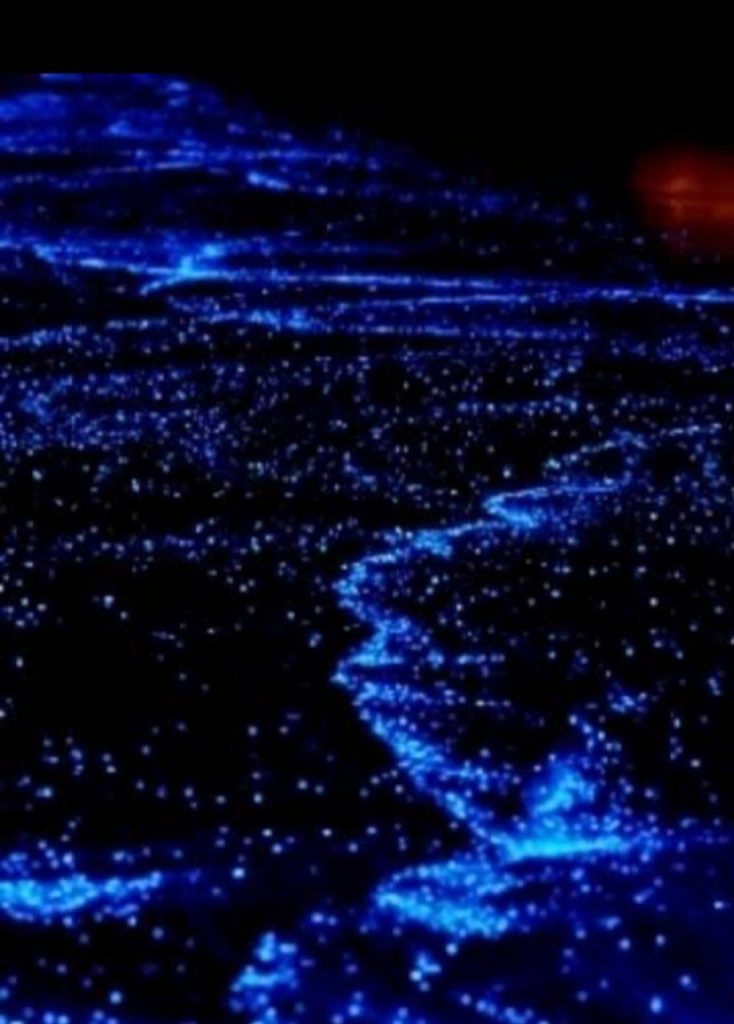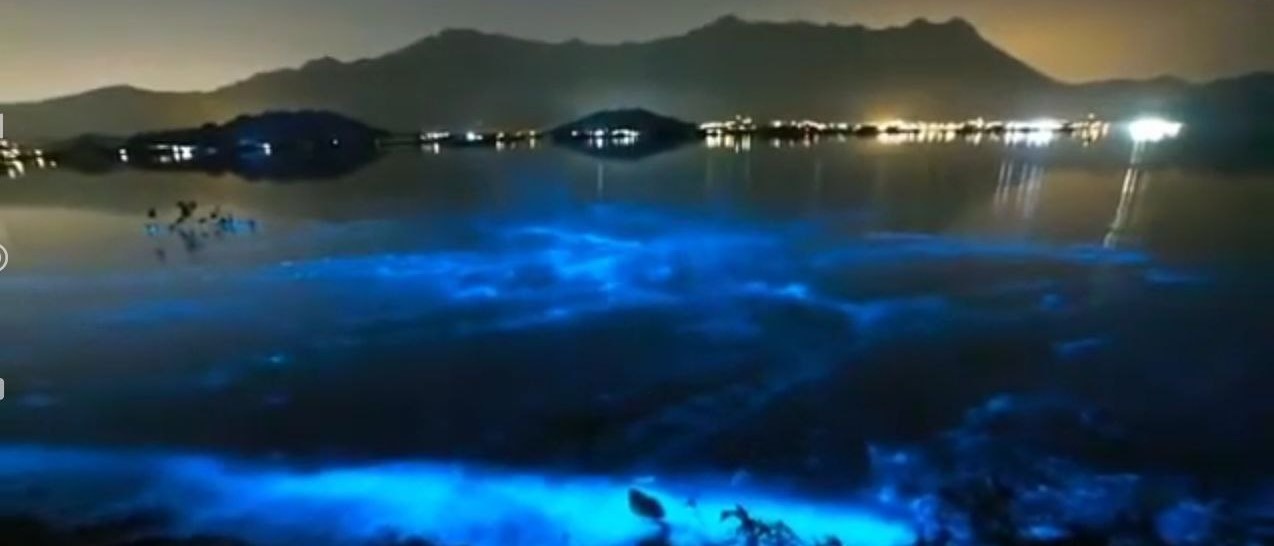the Sea of Stars in the Maldives: A Celestial Marvel


The Maldives, renowned for its pristine white sandy beaches, crystal-clear turquoise waters, and vibrant marine life, offers a magical experience beyond the ordinary. Amidst this natural splendor lies a fascinating phenomenon, the Sea of Stars. Imagine stepping onto the shore, surrounded by a mesmerizing, bioluminescent spectacle resembling a celestial sea. In this article, we will explore the stunning Sea of Stars in the Maldives. You will discover its secrets and be guided through its captivating underwater world.
Unveiling the Sea of Stars
1.1 Understanding the Phenomenon
The Sea of Stars in the Maldives is a natural wonder that defies imagination. The phenomenon occurs when bioluminescent plankton called dinoflagellates emit a mesmerizing blue glow in response to physical disturbances in the water. The effect resembles a sea adorned with twinkling stars, hence its evocative name.
1.2 Bioluminescence: The Science Behind the Magic
Bioluminescence is the production and emission of light by living organisms. In the case of the Sea of Stars, the dinoflagellates possess unique light-emitting structures within their cells. When agitated by movements such as waves crashing against the shore or the movement of marine creatures, they release light through a series of chemical reactions. This creates a stunning display of bioluminescence that illuminates the water with a celestial glow.
1.3 Unique Features of the Sea of Stars
The Sea of Stars in the Maldives stands out due to its intensity and consistency. Unlike other bioluminescent phenomena worldwide, the Maldivian waters offer a more vibrant and long-lasting display. This can be attributed to the specific species of dinoflagellates present in the area and the pristine conditions of the marine environment.
The Maldives: A Paradise for Stargazers
2.1 Maldives: A Pristine Tropical Archipelago
The Maldives is a tropical paradise comprising 26 coral atolls and over 1,000 individual islands. Its crystal-clear waters, teeming with marine life, make it an idyllic destination for nature enthusiasts and adventure seekers. The Maldivian archipelago offers a serene escape from the bustling world, allowing visitors to immerse themselves in the beauty of nature.
2.2 Ideal Location to Witness the Sea of Stars
The Sea of Stars phenomenon can be observed throughout the Maldives. However, specific islands are known for providing particularly stunning displays of bioluminescence.
Vaadhoo Island (Raa Atoll): Vaadhoo Island is widely recognized as the prime location to experience the Sea of Stars in the Maldives. The island’s shoreline offers breathtaking views of the glowing bioluminescent waters.
It’s important to note that the presence and intensity of the Sea of Stars can vary depending on factors such as time of year, weather conditions, and the specific species of dinoflagellates present in the area. It is advisable to check with local tour operators or resort staff for the latest information on the best locations and timing to witness the Sea of Stars during your visit to the Maldives.
2.3 Best Times to Experience the Celestial Magic
You can witness the Sea of Stars. Throughout the year in the Maldives, certain factors can enhance the experience. It is recommended to visit from April to June and September to November when the weather is favorable, and the sea is relatively calm. Additionally, the absence of a full moon or moonless nights provides optimal conditions for viewing the bioluminescence.

Experiencing the Sea of Stars
3.1 Guided Nighttime Excursions
Consider joining a guided nighttime excursion to make the most of your Sea of Stars experience. Local tour operators and resorts usually offer these excursions. Accompanied by experienced guides, you can embark on a mesmerizing journey into the darkness of the sea, where the magic of the bioluminescent plankton awaits. These guided tours ensure safety and provide valuable insights into natural phenomena.
3.2 Swimming with the Stars: Snorkeling and Diving
For an immersive experience, snorkeling or diving in the Sea of Stars is an absolute must. Witnessing the bioluminescent plankton up close as you glide through the water is an otherworldly adventure. The underwater world comes alive with a celestial glow, creating a surreal and unforgettable experience.
3.3 Photography Tips to Capture the Magic
Capturing the Sea of Stars in all its glory can be challenging yet rewarding. To photograph this celestial phenomenon, consider the following tips:
Use a tripod to stabilize your camera and avoid blurriness.
Adjust your camera settings to a longer exposure time to capture the faint light.
Experiment with different ISO settings to find the right balance of light and clarity.
Avoid using flash, as it can overpower the natural glow and disturb marine life.
Patience is key! Wait for the optimal moment to capture the most enchanting scenes.
Conservation Efforts and Sustainability
4.1 Preserving the Sea of Stars
As the Sea of Stars in the Maldives continues to captivate visitors worldwide, ensuring its preservation for future generations is crucial. The fragile marine ecosystem and the dinoflagellates responsible for the bioluminescence require protection. Efforts are being made by local authorities, conservation organizations, and the tourism industry to promote responsible practices that minimize human impact on the environment.
4.2 Responsible Tourism and Eco-Friendly Practices
When visiting the Maldives and experiencing the Sea of Stars, it is essential to practice responsible tourism. Respect the natural environment by not disturbing the water or touching marine life. Choose accommodations and tour operators that prioritize sustainability and eco-friendly practices. Minimize single-use plastics and be mindful of your carbon footprint during your stay.
4.3 Community Involvement and Conservation Programs
Several local communities and organizations in the Maldives are actively engaged in conservation efforts. These initiatives focus on educating locals and tourists about protecting the marine environment and promoting sustainable tourism practices. By supporting these programs, you can contribute to the long-term preservation of the Sea of Stars and the overall health of the Maldivian ecosystem.
Beyond the Sea of Stars: Exploring the Maldives
5.1 Exploring the Maldivian Archipelago
While the Sea of Stars is undoubtedly a highlight of the Maldives, there is much more to discover in this tropical paradise. Embark on island-hopping adventures, visit uninhabited islands, and immerse yourself in the rich cultural heritage of the Maldivian people. Explore the local markets, savor the delicious cuisine, and engage in traditional activities to truly embrace the essence of the Maldives.
5.2 Discovering the Marine Biodiversity
Due to its abundant marine life, the Maldives is a haven for divers and snorkelers. Beyond the bioluminescent plankton, vibrant coral reefs teem with colorful fish, manta rays, whale sharks, and other fascinating creatures. Explore underwater gardens, dive into the depths of vibrant coral walls, and witness the diversity of marine ecosystems that make the Maldives a world-class destination for underwater exploration.
5.3 Cultural Encounters and Local Experiences
To fully appreciate the Maldivian way of life, engage with the local communities and experience their traditions. Participate in traditional dance performances, try your hand at local handicrafts, and visit fishing villages to gain insights into the unique cultural heritage of the Maldives. Interacting with the warm and welcoming locals will enrich your journey and leave you with lifelong memories.
Planning Your Trip to the Maldives
6.1 Choosing the Right Resort
The Maldives offers many resorts to suit different preferences and budgets. From luxurious private islands to eco-friendly retreats, consider your priorities when selecting your accommodation. Factors such as location, amenities, activities, and sustainability practices should all be considered to ensure a memorable and responsible stay.
6.2 Travel and Accommodation Tips
When planning your trip to the Maldives, it is essential to make necessary travel arrangements well in advance. Flights to the Maldives typically arrive at Velana International Airport in the capital city of Malé. From there, you can travel by domestic flights, speedboats, or seaplanes to reach your chosen resort or island. It is advisable to check visa requirements, pack appropriate clothing for the tropical climate, and be prepared for the idyllic and laid-back lifestyle of the Maldives.
6.3 Practical Considerations and Safety Precautions
While the Maldives is generally a safe destination, it is always wise to take basic precautions. Carry sun protection, insect repellent, and a basic first aid kit. Follow your resort or tour operator’s safety guidelines, especially when engaging in water activities. Stay hydrated, respect the local customs and regulations, and be mindful of your surroundings to ensure a smooth and secure trip.
The Sea of Stars in the Maldives is a celestial marvel that captivates the imagination of visitors. From understanding the scientific principles behind bioluminescence to exploring the magical experience of swimming in the illuminated waters, the Sea of Stars offers a unique and enchanting adventure. By practicing responsible tourism and supporting conservation efforts, you can ensure the preservation of this extraordinary natural wonder. Plan your trip to the Maldives, immerse yourself in the beauty of the Sea of Stars, and create memories that will last a lifetime.
FAQ
What causes the Sea of Stars phenomenon?
The Sea of Stars phenomenon in the Maldives is caused by bioluminescent plankton called dinoflagellates. These tiny organisms emit a blue glow when they are agitated by physical disturbances in the water, such as waves or the movement of marine creatures. The bioluminescence results from a chemical reaction within the dinoflagellates’ cells, creating a stunning display resembling a sea adorned with twinkling stars.
What causes the Sea of Stars phenomenon?
The Sea of Stars phenomenon in the Maldives is caused by bioluminescent plankton called dinoflagellates. When disturbed, these tiny organisms emit a blue glow, creating a mesmerizing display in the water.
Can I swim in the Sea of Stars?
Yes, you can swim in the Sea of Stars. Snorkeling or diving in the bioluminescent waters is a popular activity among visitors. It offers a surreal experience as you glide through the shining sea.
When is the best time to visit the Maldives to witness the Sea of Stars?
The Sea of Stars can be seen throughout the year in the Maldives. However, April to June and September to November are generally recommended for the best conditions. During these periods, the weather is favorable, and the sea is usually calm, enhancing your chances of witnessing this fascinating phenomenon.
Are there any safety precautions to consider when swimming in the Sea of Stars?
While swimming in the Sea of Stars is generally safe, it is advisable to follow safety guidelines. Staying aware of your surroundings and avoiding swimming in areas with strong currents or rough waves is essential. Additionally, ensure you have proper snorkeling or diving gear and adhere to the instructions provided by your tour operator or guide.
Can the Sea of Stars be seen from any island in the Maldives?
Yes, the Sea of Stars can be witnessed from various islands in the Maldives. However, some locations are known for providing a more vibrant display. Islands such as Vaadhoo, Mudhdhoo, Fesdu, and Hanifaru Bay are famous for experiencing the Sea of Stars.
Can I capture the Sea of Stars phenomenon with my camera?
Capturing the beauty of the Sea of Stars can be a challenge, but it is possible with the proper techniques. Using a camera with manual settings and a tripod can help achieve long-exposure shots to capture the faint glow. Experimenting with different camera settings, such as ISO and aperture, can also help enhance the results. Researching photography tips specifically for bioluminescent phenomena is advisable to increase your chances of capturing stunning images.